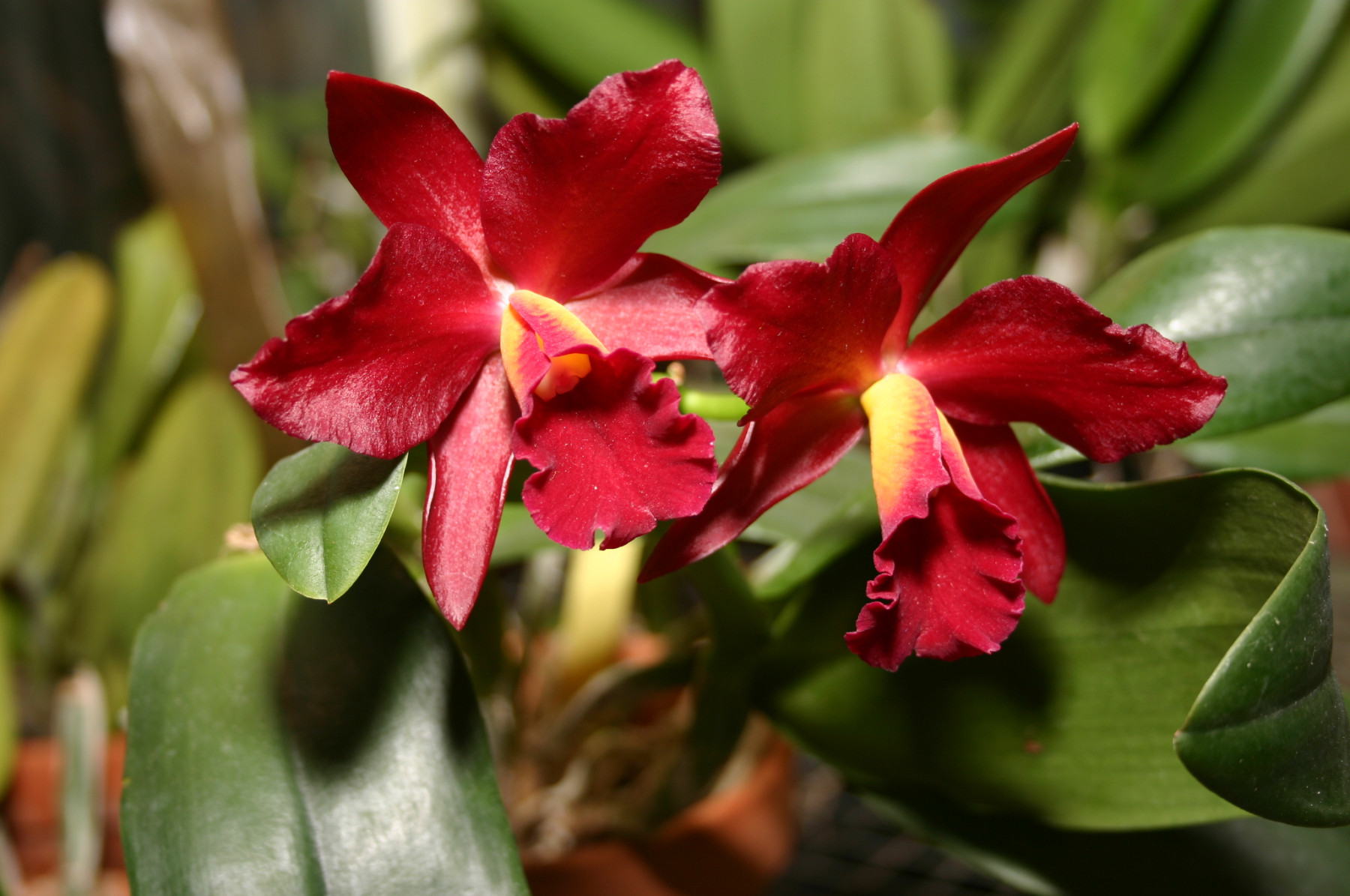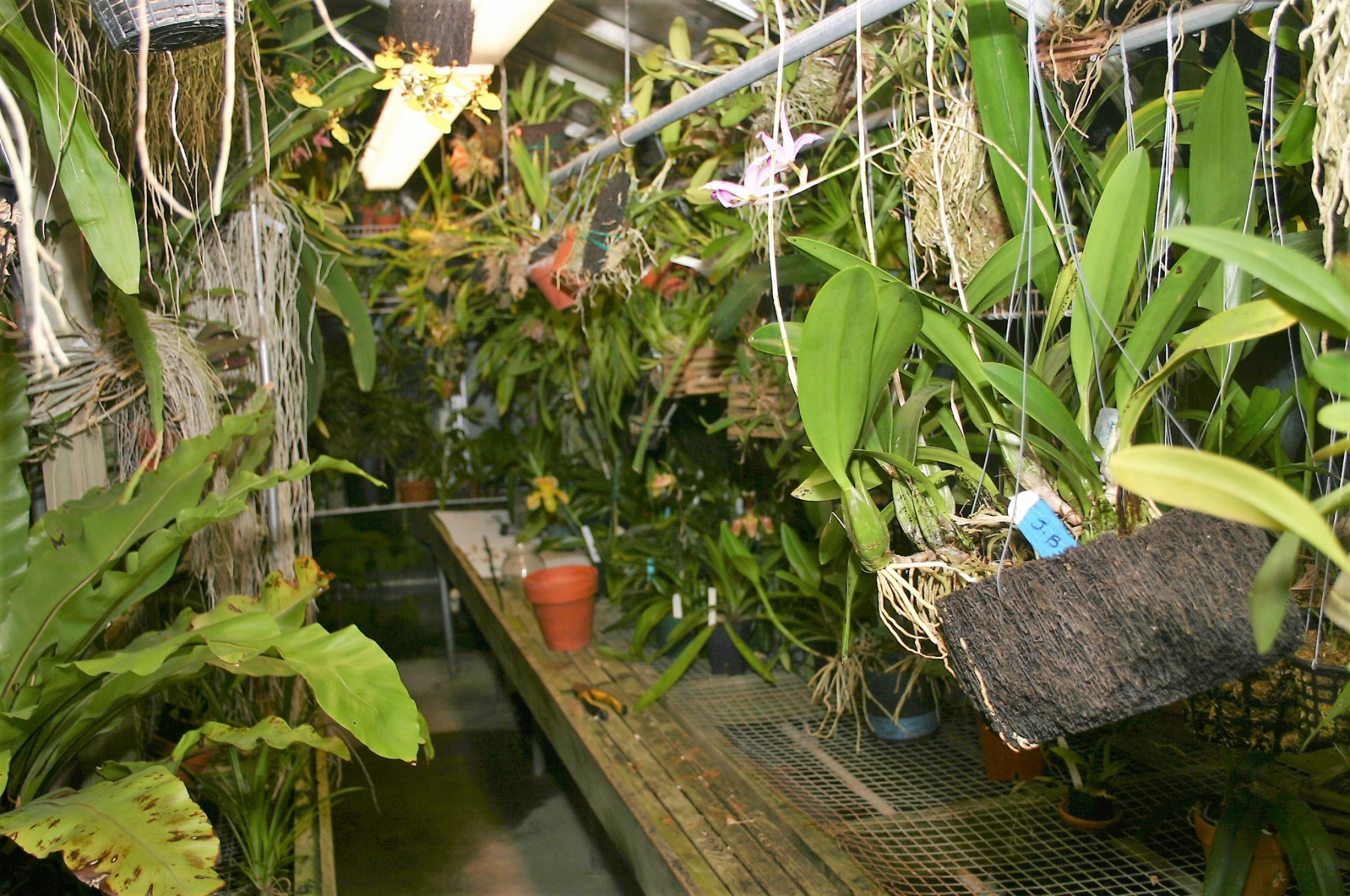
Orchids are probably the largest genus of flowering plants with nearly 30,000 species. Because these plants are fairly easy to hybridize there are somewhere around 100,000 hybrids.
Orchids grow almost all over the world, yes, even in the arctic circle, but mostly they grow in tropical rain forests. That said, orchids can be found in deserts, in regular dirt, in peat bogs, in sandy seashores. Some grow in trees and draw their nutrients from rainwater running down the tree. Some orchids have no smell, other have a wonderful aromas, and a few can smell awful, like rotting eggs. Some bloom at night to attract bats, but mostly they bloom during the day. Their blooms can range from an eighth-inch across to a foot or more.
Because there are so many varieties, often, people are intimidated by growing them. But for a gardener who wants to grow orchids, but doesn’t want to spend a lot of money, try some of the orchids available in many big box stores, then join an orchid club or society. Most states have at least one. Going to a society meeting can be Intimidating when the lecturer is an expert you often have the opportunity to ask questions. When members find out you are just getting into orchids, you will find that most people are only too willing to share their expertise.

Where do you start?
The hybrids sold in big box stores are mostly hybrid phalaenopsis orchids, sometimes called Moth orchids, and can often be purchased for under twenty dollars. They sell well because they prefer temperatures similar to that preferred by people, no lower than 50 degrees F at night and around 70-75 degrees F during the daytime. (Often these orchids are sold with instructions that say drop an ice cube into the pot every day. For orchids that grow best in warm climates that’s like taking an Ice-Bucket challenge every day!) All you need do, is make sure the potting medium is kept reasonably moist. Fertilize them once a month while in flower. Stop fertilizing when the flowers die back and put the plant in a shady but reasonably warm spot while it is ‘resting.’ Keep the potting medium moist.
In six to twelve weeks you may see a new flower spike emerge. When it emerges start fertilizing again, and the plant will reward you with new flowers. Phalaenopsis prefer to be grown in bright light but not direct sunlight. Think about a plant growing on a tree limb. The plant gets dappled sunlight, but usually it does not get full sun for a long period. Try to position your plant so it gets similar conditions. An east or west facing window ledge can be ideal. But in winter move the plant back from the window to avoid the cold. The leaves will tell you if you plant likes its location. Dark green leaves are perfect, Yellowy leaves mean too much sunlight. Withered leaves mean not enough water.

As you become more proficient at owning and growing orchids, you will learn more about where the orchid species came from and how each likes to grow. Some orchids come from the same country, but their needs might be vastly different. For example, orchids grown in the rain forests of Ecuador require far different care than do orchids grown near the more arid inland areas of the same country.
Having mastered growing relatively inexpensive phalaenopsis orchids, your next step might be to grow a slightly more challenging plant. In this case you might buy a cattleya orchid. They like conditions similar to Phalaenopsis. In their native conditions, cattleya grow in rainforest trees throughout the Americas. Thus, they are often grown in wood chips to simulate the debris found in tree notches. Cattleya require watering to keep the pseudobulbs at the base of the plant plump. Fertilize only when the plant is in flower and very sparingly at that. In their native habitat these plants are fertilized by bird droppings, dead insects and other detritus that falls down the tree. Because they grow under the canopy of trees, cattleya should not be placed in bright sunlight. An east or west facing window is best, but a spot where there is bright, but shaded light is also good.
Often crossed with Cattleyas are Laelia orchids. Laelia orchids originally grew from Brazil to Mexico. Laelias prefer bright sunlight of the kind you might find in Mexico, although some of the Mexican species prefer dry, bright conditions and should not be overwatered. Typically, these species are grown in hanging baskets where they can get a lot of sun and airy, dry conditions.

If you don’t keep your home warm enough to grow either of the above plants, you might try growing Cymbidium orchids. Cymbidiums do not require extremely warmth, nor do they like extreme cold, but some can take a light freeze. On these plants the leaves should be light yellowish green. Too much sunlight will bleach the leaves, to little will turn them darker green. Cymbidiums typically flower from December to April or May, so they are an ideal plant to grow for winter flowers. The sprays of flowers last a long time (up to three months) provided the potting media is kept moist.
Yet another easy to grow orchid is a dendrobium. Wild dendrobiums can be found from India to Australia, but again, when growing dendrobiums, you do need to know where and how they grow. Some like full shade, other grow in full sun. Some like it warm, others will grow under cool conditions, but most will grow well, as long as they have air movement and bright but not direct light.
These are just a few orchids that can be grown at home in a sunroom or in a greenhouse. If you want to try orchids go out and buy a few now. Only by growing different species will you learn what these spectacular plants like and what you like about them.


